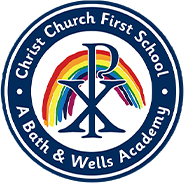Geography
Our geography projects are well sequenced following the Cornerstones Curriculum, to provide a coherent subject scheme that develops children’s geographical knowledge, skills and subject disciplines. Children will be taught a broad and diverse understanding of the world.
Where there are opportunities for making meaningful connections with other projects, geography projects are sequenced accordingly. For example, children revisit the geography of settlements in the history project School Days after studying types of settlements in the geography project Bright Lights, Big City. All geography projects are taught in the autumn and spring terms, with opportunities for schools to revisit less secure concepts in the summer term.
In Amber Class, each autumn term begins with essential skills and knowledge projects (Our Wonderful World and Let’s Explore the World). Teaching these projects in Key Stage 1 enables children to be introduced to, or revisit, critical geographical concepts, aspects, skills and knowledge. These projects prepare children for the study of more thematic geography projects in the following term. Children will be introduced to the geography of urban environments and the physical and human features of the United Kingdom. In contrast, in the spring term, the children learn about Bright Lights, Big City Part 1 - finding out about the United Kingdom, physical and human features and finding out what a city is. To finish the project Part 2 comes in the summer, homing in on London - where it is, what landmarks are their, aerial photos and then giving directions and comparing other cities to there.
In Topaz, children begin with essential skills and knowledge projects (Interconnected World Part 1 - looking at compass points, map co-ordinates and how the UK is connected in transport). Teaching these projects in Topaz enables children to further develop their skills, knowledge and understanding of key geographical aspects and concepts and prepares them to study more thematic geography projects in the following term. In the spring term of of Topaz, children carry out a detailed study of the physical features of mountains and rivers, which includes opportunities for in-depth fieldwork. In summer, they learn about Interconnect World Part 2, here the - children look at the World the tropics and the equator, alongside a case study of North and South America contrasts, climates and life.

 Christ Church First
School
Christ Church First
School
